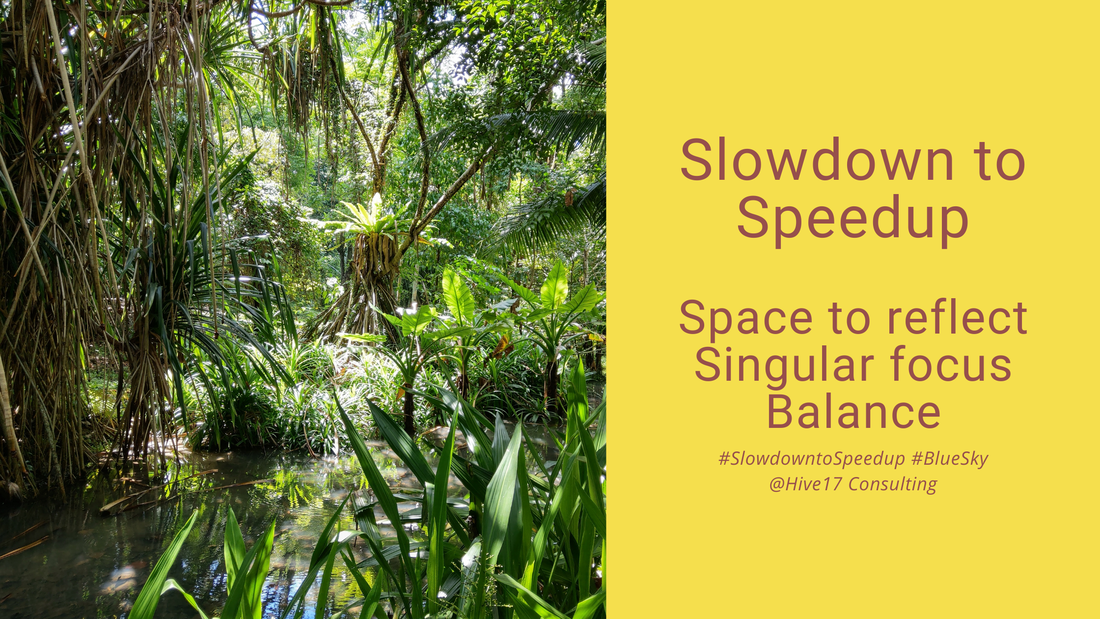|
While I am partnering with teams to allow them to become stronger, faster and successful in competitive, complex and ever-changing business environments, I often take out the tool of Objectives and Key Results (OKRs). When implemented correctly, they allow teams to get aligned into a common direction, to focus on what needs to be done now, and to create transparency on where we are and where we want to shift resources. When handled carelessly, then the implementation can also lead to frustration and disengagement.
Where as a leader do I need to be careful with when implementing OKRs? When I am implementing OKRs, I put a lot of focus on defining them with autonomy in the team. There are a number of external elements that give direction to the team, for example the company vision, market developments, customers' needs & insight and so on. Then, it is up to the team how they want to define and formulate the objectives they want to aim at in the long term. And, then identify the key results they want to achieve in the next three months. The team is in the driver seat and is in constant communication with their leaders to create alignment. In my observation, this process has proven to be highly motivating and meaningful to the teams. We heard many times that goals need to be specific, and yes, for the short-term key results it is important to bring clarity on the work we want to engage in now. At the same time, making the objectives too specific can act as a barrier to exploring alternative ways to reach the north star. Ambitious targets are a two-sided sword. And recently in my work I see that teams are simply exhausted and demotivated because they don't see how they can possibly achieve their OKRs. I often explain teams that they better travel light on their journey (with a smaller set of key results) and when these are completed, they can look a their backlog and "load" new key results. If their backpack is too heavy, it will slow them down. In this sense, it is good enough to aim at 70-80% achievement of the key results - something that I have read in the original description of OKRs (re:work). People are inherently ambitious with the right purpose guiding them. Targets don't need to be ambitious. Tracking and scoring OKRs is also a delicate path. Here the clear intention is creating transparency and input to decide where to allocate resources for the next month. This review step is intended to create breathing space and reflection on where we are on the journey. There needs to be a level of trust between the different parties to make the review process smooth. When no trust exists, this activity will end up in frustrating micromanagement. Thanks to the Corporate Rebels to inspire this reflection with their article The Dark Side Of OKRs (And Why We Should Care). What are the pitfalls you have been observing when introducing OKR?
0 Comments
Since about a decade, we talked about a business environment that is constantly changing, complex and exposing our company to disruption. The year 2020 showed us, how real this can be for any business and for our entire life. Over the last five years, I have developed a framework which I think allows us, our teams, and our company to create a platform for lasting success. A conversation yesterday motivated me to share this here again.
The volatile business environment we are in, requires an important revelation: if we continue doing the same thing, we will be getting the same results. So, we need to try new things. Then, the main question is: who should define these experiments? Who should be in control of bringing our business forward? As a change management practitioner, I suggest two dimensions which are highly important to our leadership. Direction - How often do we define a new strategy and after some time realise that our business is still running in the same way? In my experience, the bottleneck is not the understanding of what the strategy is; rather, there is a lack of understanding and persistence on how this new strategy is impacting everybody's daily work. Here we need alignment and transparency to define and implement the collective dream. Acceleration - In a next step, there are more barriers for success: who is coming up with the crazy ideas? Only big bets will make us move forward over time. And, implementing big bets seems to be a daunting endeavour like climbing the Mount Everest. Here we need experimentation, focus, safe working environment, cross-silo collaboration, etc in order to innovate and to excel. How are you able to trigger the change in your company culture to achieve this platform for lasting success? Please reach out to me to exchange thoughts. You start your day and in your calendar you only see this large brick wall of back-to-back meetings. The expression, "Sorry guys, have to drop for the next meeting" is only getting too familiar. On a Monday evening you feel that you have already exhausted your week's energy. Work life feels like rushing from pole to pole, and the target is not to drown - at least not too deep.
What is the result of that? We feel we are running on a treadmill and not getting anywhere. We lose sight of the big picture, of the purpose that we intended to achieve. We are less capable of being empathic and compassionate. And there seems to be no time to grow the people around us and ourselves. Growth means innovation, and innovation can only happen with creativity. For this we need a mind that is receptive for new impulses. And for this we need space - physical and mental space. We need to slow down. The speed comes then with new focus on doing the right things, minimising wasted efforts, and combining different ideas to new solutions. We suddenly can identify barriers that we never identified as such. And we can create a more positive, meaningful, and enjoyable environment. This Wall Street Journal article - How Being More Productive Starts With Doing Nothing - gives some ideas how to take a break and create mental space. What are your ways to slowing down? How do you experience the speeding up? After about 12 months of working from home, we finally open up more to go back to work in the office. In fact, I observe more and more managers and companies demanding their employees to come back. They want their teams to be more accessible, easy to reach.
This reminded me of studies from the late naughts around the financial crisis that highlighted that one of the biggest cause of stress at work are distractions - a instant message popping up, the e-mail notifications, and the boss asking important questions. All the while you were trying to focus on designing a new solution for your customer (here a summary). Not much has changed since then. Distractions are preventing us from being productive and deliver high quality work. This study from ETHZ in Switzerland confirms this in a 2020 study: Workplace interruptions lead to physical stress. The people that got interrupted tested with twice as much cortisol than the other group. It is time to rethink how we are productive in our job. A few weeks back, a friend of mine, Sebastian, shared with me his future office ideas. Their new office will be very simple and serve two functions. A social space for people to connect informally, share a cup of coffee and ideas, and host small functions after work for networking. A collaborative area will be dedicated to working together on projects, host client workshops, and connect people to brainstorm and be creative. "I can't image my people to be back in the office to send e-mails or write reports", he said. This approach resonates with me a lot: different activities in our job require different environments. Sometimes we want to collaborate and meet people; sometimes, we want to focus and be free of interruptions. One is best when we physically meet in an office; the other can easily be done at home (or another quiet place). And who is best to make the decision where to work? As leaders, let's give people the choice where and when to work. How does this resonate to you? What does it take to give your employees control over where and when they work? Are they mature enough to decide when it is best to work in the office? |
Subscribe
Receive our monthly themed summaries of our thoughts: click! TimTim is a change practitioner in the area of innovation and excellence. He is working with teams to accelerate innovation, collaboration and agility. Categories
All
Archives
July 2024
|





 RSS Feed
RSS Feed